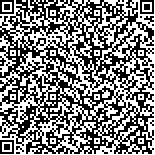Archive > Volume 43 Issue 9 > 2017,43(9):1052-1063. DOI:10.7519/j.issn.1000-0526.2017.09.003 Prev Next
A Method to Determine Winter Precipitation Type in Anhui
- Article
- Figures
- Metrics
- Preview PDF
- Reference
- Related
- Cited by
- Materials
Abstract:
Using the observation data from November to the next April in 2000-2009, the temperature, relative humidity and pseudoequivalent potential temperature profile characteristics associated with different precipitation types in winter including rain, snow, sleet and freezing rain were analyzed. The results demonstrated that the distinguishing ability for temperature, relative humidity and pseudoequivalent potential temperature profile decreases with altitude from surface to 500 hPa in plain and mountainous areas. In addition, the distinguishing ability for relative humidity in different precipitation types is much weaker than the other two. At the same pressure level, the distinguishing ability of temperature and pseudoequivalent potential temperature is comparative for precipitation type in plain areas, and the distinguishing ability of the latter is better in mountainous areas at some pressure levels. At different pressure levels, the temperature and pseudoequivalent potential temperature are close to normal distribution for different precipitation types in plain areas, and the latter is closer to normal distribution than the former in mountainous areas. Therefore, pseudoequivalent potential temperature is more suitable for the factors to distinguish precipitation types. The multilevel discriminating equation was set up based on pseudoequivalent potential temperature at 6 levels (5 levels in mountainous areas) from surface to 500 hPa. In addition, the independent tests were conducted using the sample of precipitation type in 2010. The results indicated that the discriminating equation could distinguish rain, sleet or snow, freezing rain, but it is poor when distinguishing sleet and snow. The forecast verification based on T639 model data demonstrated that the equation can forecast the change time and region between rain and snow better. It is worth applying to operational prediction of winter precipitation type, and has been used in operations at Anhui Meteorological Observatory since 2011.
Keywords:
Project Supported:
Clc Number:
P457


Mobile website









